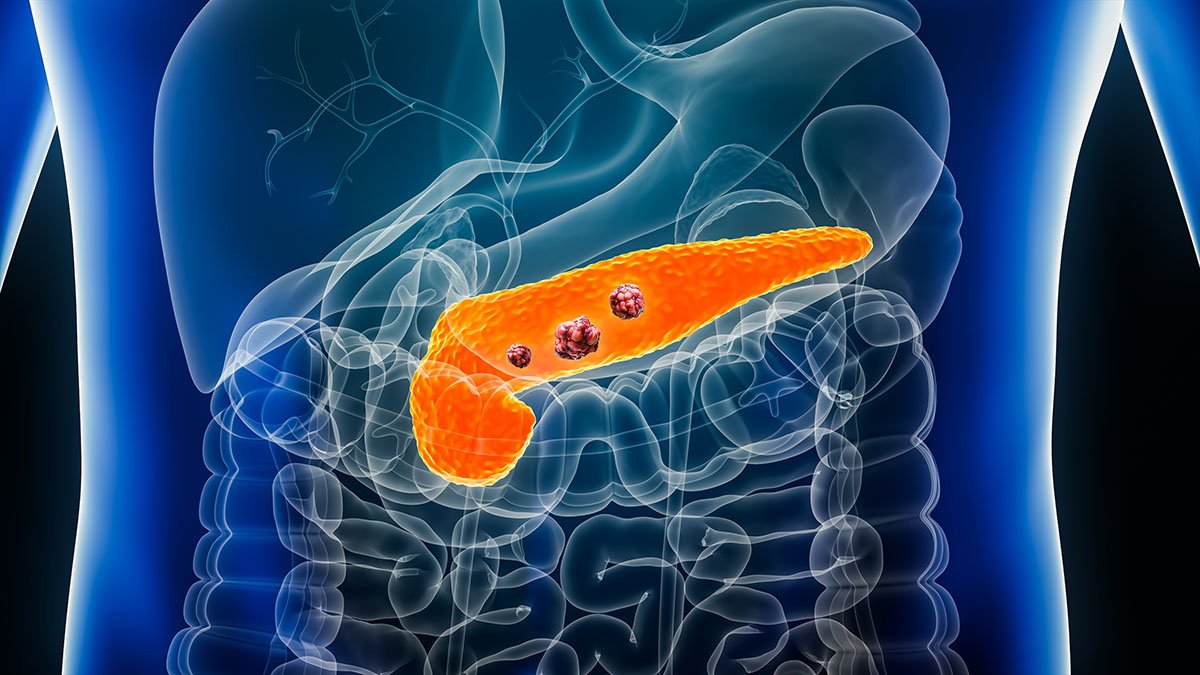Recognizing the Symptoms of Pancreatic Cancer
Pancreatic cancer is often referred to as a silent disease due to its subtle onset and vague symptoms, which can complicate early diagnosis. Understanding the common symptoms associated with pancreatic cancer is essential for prompt medical intervention. One of the early warning signs of this condition is unexplained weight loss. Individuals may notice a significant reduction in body weight without any apparent cause, which can indicate an underlying issue with metabolism or nutrient absorption linked to the pancreas.
Abdominal pain is another symptom that frequently presents in patients with pancreatic cancer. This discomfort can manifest as a dull ache in the upper abdomen or may radiate to the back. It is crucial to pay attention to such sensations, as they can suggest potential pancreatic dysfunction. Jaundice, characterized by a yellowing of the skin and eyes, emerges when the cancer obstructs bile ducts, leading to an accumulation of bilirubin in the bloodstream. This symptom is often accompanied by dark urine and light-colored stools, serving as strong indicators of possible pancreatic issues.
Furthermore, changes in appetite and unexplained digestive disturbances can also be symptomatic of pancreatic cancer. Patients may experience early satiety, causing a decrease in food intake, or suffer from nausea and vomiting. Recognizing these early signs is paramount, as they may indicate more serious health problems that warrant further evaluation. It is important to note that as pancreatic cancer progresses, atypical symptoms may emerge, including new-onset diabetes or blood clots, which may be overlooked or dismissed. Anyone experiencing such symptoms should seek medical attention promptly to ensure a thorough assessment and appropriate diagnostic procedures.
Diagnosing Pancreatic Cancer: What to Expect
Diagnosing pancreatic cancer is a multifaceted process that entails a series of tests designed to yield accurate results and confirm the presence of the disease. The initial stage often begins with a thorough physical examination and a detailed discussion of the patient’s medical history. Physicians may look for specific symptoms, such as unexplained weight loss, jaundice, and abdominal pain, which could indicate pancreatic cancer.
Imaging tests are crucial for visualizing the pancreas and identifying any abnormalities. Common imaging techniques include computed tomography (CT) scans, magnetic resonance imaging (MRI), and ultrasounds. CT scans provide detailed cross-sectional images, which can reveal the size and location of tumors, while MRI utilizes magnetic fields to produce detailed images of soft tissues in the body. Ultrasound, on the other hand, is often employed as a preliminary diagnostic tool to determine if further investigation is necessary.
Additionally, blood tests are integral to the diagnostic pathway, particularly those that screen for tumor markers such as CA 19-9. Elevated levels of this marker might indicate pancreatic cancer, but it is important to note that they are not exclusive to this condition. Hence, abnormal results from these tests typically lead to further investigation through imaging or biopsies.
A biopsy is a definitive procedure for diagnosing pancreatic cancer. This process involves removing a small sample of tissue from the pancreas for examination under a microscope. Various methods can be employed for obtaining a biopsy, including endoscopic ultrasound-guided fine-needle aspiration, which provides a minimally invasive option for accurate diagnosis.
Timely diagnosis plays a critical role in improving outcomes for patients with pancreatic cancer. Early detection can significantly enhance treatment options and potentially extend survival rates. Therefore, individuals experiencing relevant symptoms should consult a healthcare provider promptly to initiate the diagnostic process.
Management Strategies for Pancreatic Cancer
Effective management of pancreatic cancer requires a comprehensive approach, combining various medical treatments and supportive care strategies. Treatment options typically include surgery, chemotherapy, and radiation therapy, each tailored to the specific needs of the patient.
Surgery may be considered when the cancer is localized and can be entirely removed. The most common surgical procedure is the Whipple procedure, which involves removing the head of the pancreas, the duodenum, a portion of the stomach, and surrounding tissue. If the cancer has spread, chemotherapy becomes the primary mode of treatment. This involves the administration of drugs to kill cancer cells or slow their growth, often used in conjunction with surgery. Various combinations of drugs, such as gemcitabine and nab-paclitaxel, have been shown to improve outcomes in pancreatic cancer patients.
Radiation therapy plays a crucial role, particularly in managing symptoms and targeting tumor cells before or after surgery. It may also be used for patients who are not eligible for surgery to help alleviate pain or other symptoms caused by the tumor. Furthermore, involving a multidisciplinary team—including oncologists, surgeons, radiologists, dietitians, and pain management specialists—is essential in this clinical setting.
Supportive care is equally vital. Effective pain management strategies, such as medication, interventional procedures, and alternative therapies, can significantly enhance patient comfort. Nutritional support is critical, as cancer and its treatment may impact appetite and digestion. Dietitians can guide patients toward maintaining adequate nutritional intake, which is fundamental for treatment tolerability and recovery. These management strategies collectively aim to improve the overall quality of life for pancreatic cancer patients, allowing them to cope better with the challenges of their diagnosis and treatment.
Living with Pancreatic Cancer: Tips for Patients and Caregivers
Living with pancreatic cancer can be an arduous journey, but there are strategies that can help patients and caregivers manage the challenges more effectively. Emotional support plays a critical role in coping with this illness. It is essential for patients to express their feelings and concerns, whether through a close friend, family member, or a counselor specialized in cancer care. Caregivers should also be mindful of their emotional needs, ensuring they prioritize their own mental health while supporting a loved one. Establishing open lines of communication between patients and caregivers can foster an environment conducive to shared experiences and emotional relief.
Lifestyle modifications can significantly enhance quality of life for individuals diagnosed with pancreatic cancer. A nutritious diet rich in fruits, vegetables, lean proteins, and whole grains can help combat fatigue and maintain strength. Regular physical activity, as approved by healthcare providers, can also improve physical and mental well-being. It is vital for patients to adhere to their treatment plans and discuss any changes in their condition with healthcare professionals promptly.
Accessing palliative care remains a beneficial aspect of living with pancreatic cancer. Palliative care focuses on symptom management and improving the patient’s overall quality of life. Involvement in support groups can also be an empowering experience for both patients and caregivers. These groups provide opportunities to connect with others facing similar challenges, share coping strategies, and offer emotional support.
Finally, building a reliable support network is crucial. Family, friends, healthcare providers, and fellow patients can offer invaluable assistance—whether through practical help, emotional comfort, or sharing vital resources. By maintaining a proactive approach and utilizing available support systems, both patients and caregivers can navigate the complexities of pancreatic cancer more effectively.






